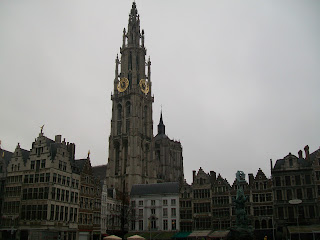How to Use the Metro, Rome's Subway System:
It's quite simple, really. Currently, there are two lines, the A line and the B line. A third one, the C line is being built as I type this. The city is diligently working on this additional line and it's said to be open sometime in 2013 though I won't be surprised if a delay occurs. After all, they are digging through ancient grounds and if they come upon something truly special all processes are on hold until it can be excavated, preserved, etc.
First things first: buy your ticket! Un biglietto per favore. One ticket please. Pretty much every single subway station has an automated machine to purchase a ticket. If you are in town for longer than a day or two, you'll be better off going to a Tabacchi store (the store on every major street with a big T on it's sign outside) to buy weekly passes (16 Euro) or even a monthly pass (30 Euro). If I recall, there's a 3 day pass for 11 Euro too. All passes are good for Metro, bus, and even local train travel within the city limits of Rome.
NO, YOUR PASS IS NOT VALID FOR GETTING TO AND FROM THE AIRPORTS IN ROME. In the future, I will provide specific instructions on how to get to Rome from the airports.
Second, insert your pass into the scanner. It's like a vending machine slot you put money bills into, except only public transportation passes fit into it. Normal tickets from the automated machines as well as most passes bought from tabacchi stores work this way.
If you bought one of those all-encompassing tourist passes such as the ROMA PASS, you just swipe the card in front of the reader (above the scanner slot) until the light turns from red to green (usually it takes 3 to 5 swipes until it FINALLY recognizes that your pass is valid). Regardless of which pass you use, you'll know if it worked because the glass panels blocking your way will open allowing you to go through.
Third, choose your direction! Sometimes you have to choose your direction BEFORE you go through the entrance panels. But most times, my experiences tell me you will perform this step next. You choose your direction based on the last stop on the line. The end points. Not sure what your end point is? There is always a map somewhere in the station for you to look at if you are desperate.
Metro A Line end points: Battistini (Left side) and Anagnina (Right side)
 |
| Source |
 |
| Source |
Fourth, and once you've chosen which direction to go, you wait behind the yellow line on the platform. A train arrives and you get on the train in that narrow window of time while the doors are open. 10 seconds total maybe? 15 seconds possibly? The more people at the station, the longer the conductor will keep the doors open. It's not very much though so be quick! But don't forget to be courteous. Let the people off the train first! Too many tourists and locals forget this.
Fifth, know which stop exit the train. Every car has a map of the A Line or B Line in it depending on which line you are on, which are usually located above the car doors. Also, some of the transports used are newer than others meaning out of the car's speakers come first an Italian voice telling which stop is next and which side to exit, then in English. But you don't always get a new car. When you arrive at each stop, look through the windows and pay attention to the walls of the station so you have a clue which one you are at. There is always text letting you know which station is which.
APPLY THIS KNOWLEDGE: For example when I am at Termini Station and I want to go to the Piramide stop to get some great food in the Testaccio neighborhood, or to go home since that's where I live, I have to get on the Metro B line going in the direction of Laurentina. Then I have to take it four stops (From Termini, it goes Cavour, Colosseo, Circo Massimo, and finally Piramide).
Don't forget to exit the vehicle and good luck!
Current hours for both the Metro A and B lines are as follows and of course, subject to change:
Sunday - Thursday: 05:30 - 23:30
Fridays and Saturdays: 05:30 - 01:30
Need more info? I recommend this site. http://www.atac.roma.it/index.asp?lingua=ENG
























